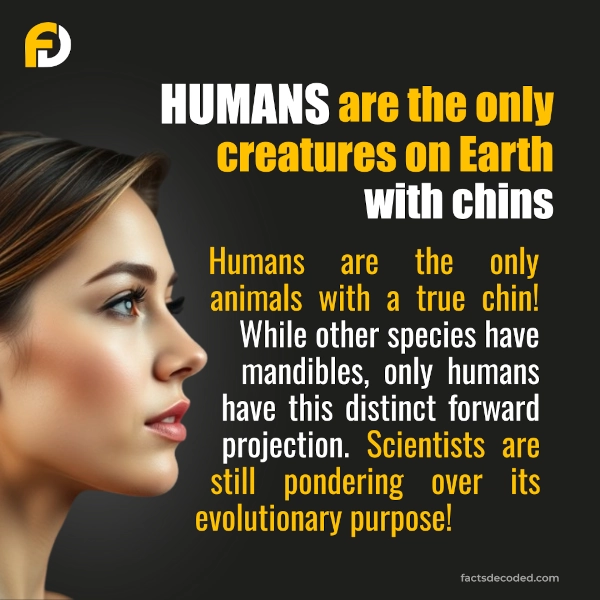
Anatomical Anomaly of the Human Chins
The human chin is an evolutionary enigma. While other animals have lower jaw structures, the distinctive bony prominence below our lower teeth is unique to Homo sapiens. Over the years, scientists have proposed various theories about its purpose. Could it improve speech, enhance chewing efficiency, or simply serve as a structural byproduct of jaw evolution? Despite decades of debate, the exact reason remains elusive, making the chin one of evolution’s most intriguing puzzles.
Fossil Insights
Anthropologists trace the emergence of chins back to 200,000 years ago, coinciding with the rise of anatomically modern humans. Fossil records reveal that even our closest relatives—Neanderthals and other early hominins—lacked chins. This anatomical feature’s appearance aligns with significant changes in skull structure, such as a reduction in jaw size and a shift toward flatter facial profiles. These changes hint at its connection to dietary shifts, speech development, or other adaptive pressures unique to our species.
Cultural and Evolutionary Importance
Human Chins transcend their anatomical role, influencing social communication and aesthetics. Whether it’s helping humans express emotions or shaping perceptions of beauty, the chin adds depth to our interactions. From sculptures of antiquity to modern beauty standards, this small yet defining feature plays a pivotal role in how humans present themselves and are perceived by others. Some even argue that its prominence contributed to evolutionary advantages through mate selection or signaling health and vitality.
Fun Facts
- Celebrity Chin Club: Actors like Kirk Douglas are famous for their cleft chins, which result from incomplete fusion of jawbone halves during development.
- Chinless Ancestors: Fossil evidence shows that species like Neanderthals and earlier human ancestors did not have chins, reinforcing its uniquely human nature.
- Biological Mystery: Unlike other facial features with clear purposes, the chin’s function remains debated—potentially just an evolutionary accident.
- Chewing Theory: Some scientists believe chins help distribute stress across the jaw while chewing, an advantage in early human survival.
- Facial Identity: Chins play a significant role in facial recognition algorithms, underscoring their importance in making human faces distinctive.
For more fascinating insights into the quirks of human evolution, check out our “Beyond the Surface” section and delve deeper into the mysteries of what makes us uniquely human!

We choose not to clutter your experience with ads. If you’d like to support us, consider showing some love by liking this post on X (Twitter), Instagram or Facebook!
Share this Post, Spread the Knowledge!
